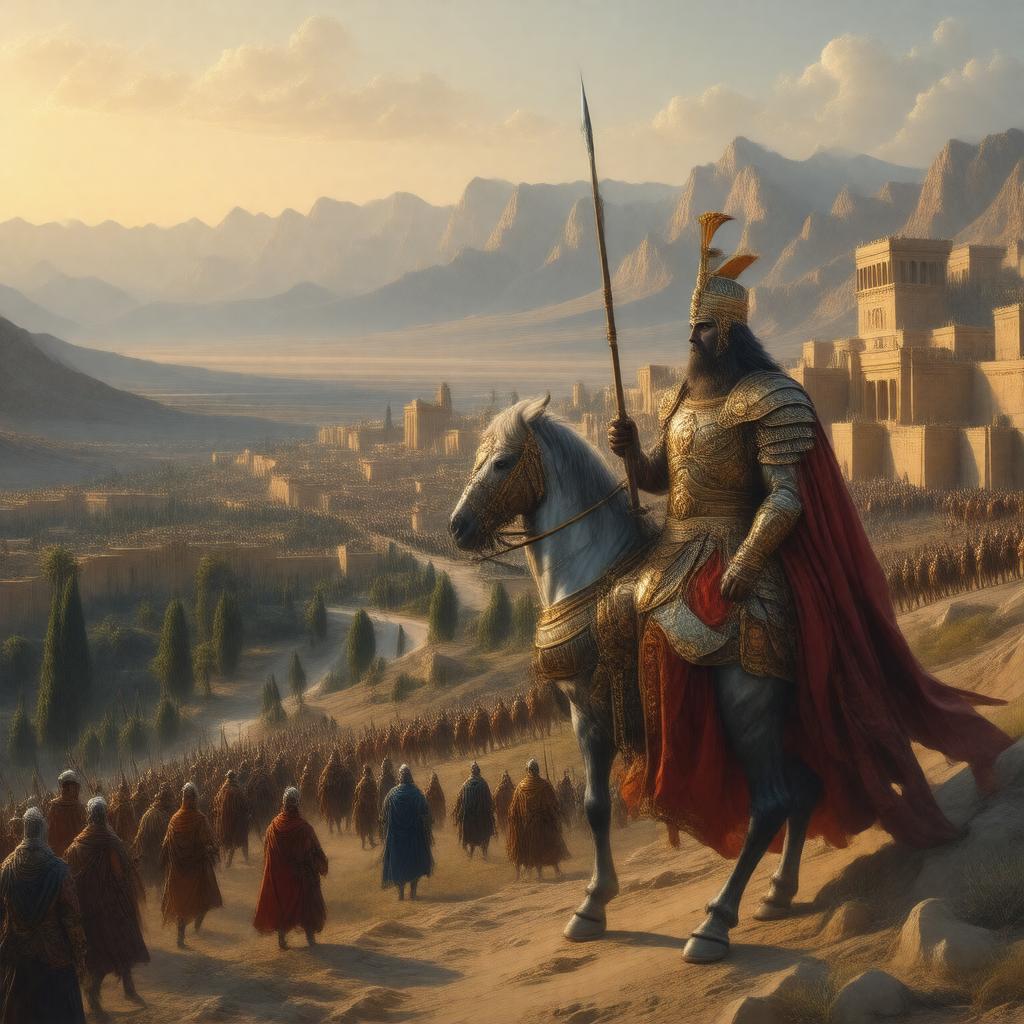Prompt
"Generate an image of a majestic, sprawling ancient cityscape at sunset, with a mix of Persian and Greek architectural styles, surrounded by vast deserts and mountains in the distance. In the foreground, depict a powerful Parthian king, dressed in ornate, gold-trimmed armor and a royal headdress, riding a horse and holding a spear, with a city gate and a Zoroastrian fire temple in the background. Incorporate elements of the Silk Road, such as merchants and traders from different cultures, and include a subtle representation of the Parthian cavalry and their iconic shot. Style: a blend of realism and stylized ancient Persian art, with warm, golden lighting."

